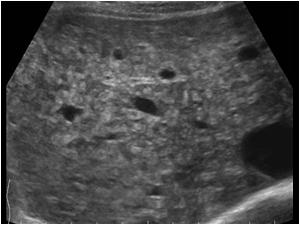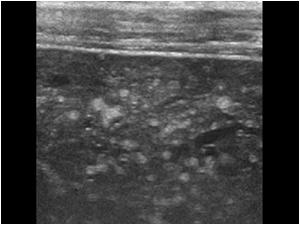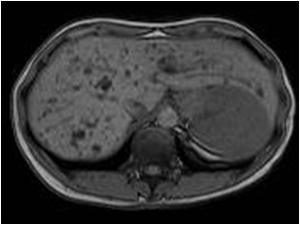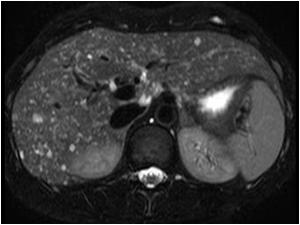Incidental finding




The intrahepatic lesions proved to be von Meyenburg complexes or biliary hamartomas
Biliary hamartomas or von Meyenburg complexes are uncommon benign malformations of the bile ducts. They are composed of disorganized bile ducts and sometimes fibrocollagenous stroma. They are usually multiple small (<1 cm.) round or irregular lesions scattered throughout the liver. These lesions are often discovered incidentally.
Imaging appearance often varies. On ultrasound, they may be hypoechoic, hyperechoic, or mixed echogenicity structures. CT shows hypodense, small hepatic nodules, scattered throughout both liver lobes with no enhancement in most of the cases. On MRI, VMCs are numerous intrahepatic tiny cystoid lesions, reveal hypointensity on T1-weighted and hyperintensity on T2-weighted pulse sequences as compared to surrounding parenchyma